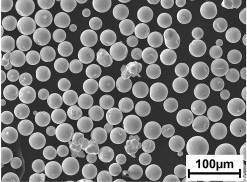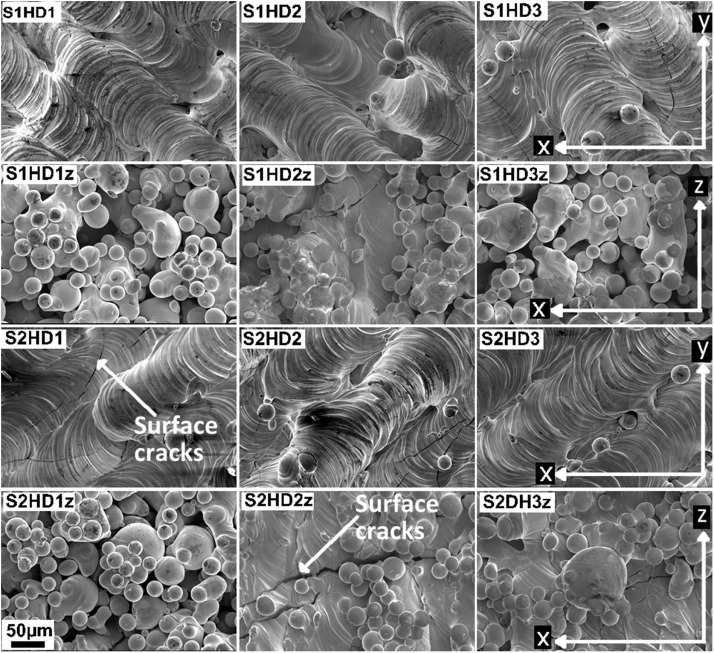 Tungsten is a dense, robust metal that has a number of valuable applications, particularly in the chemical industry thanks to its corrosion resistance. Its hardness and extremely high melting point, however, have made it a difficult material to 3D print. In a paper entitled “Effect of processing parameters on the densification, microstructure and crystallographic texture during the laser powder bed fusion of pure tungsten,” a group of researchers addresses those challenges.
Tungsten is a dense, robust metal that has a number of valuable applications, particularly in the chemical industry thanks to its corrosion resistance. Its hardness and extremely high melting point, however, have made it a difficult material to 3D print. In a paper entitled “Effect of processing parameters on the densification, microstructure and crystallographic texture during the laser powder bed fusion of pure tungsten,” a group of researchers addresses those challenges.
“This work looks to extend its [laser powder bed manufacturing’s] use to refractory metals, such as those considered in this paper where the behaviour of pure tungsten powder is investigated,” the researchers explain. “A strategy for fabricating high density parts was developed by creating a process map in which the effect of laser energy density was studied. The process quality was assessed using different techniques including light optical microscopy, XCT, SEM and EBSD. The results showed that the laser energy density was adequate to process tungsten to produce functional parts.”
Depending on the process conditions, the bulk density and optically determined densities of the tungsten ranged from 94 to 98%, but the parts showed micro cracks and defects due to micro- and macro-scale residual stress.
“Analysis of the microstructure and local crystallographic texture showed that the melt pool formed under the laser beam favoured solidification in a preferred orientation by an epitaxial growth mechanism,” the researchers continue. “The EBSD local texture analysis of the tungsten specimens showed a <111>//Z preferential fibre texture, parallel to the build direction.”
Two types of tungsten specimens were 3D printed, and were analyzed using scanning electron microscopy. Although the parts were prone to cracking, the researchers determined that the density and quality of the specimens produced in the 3D printing process were sufficiently high for use in applications such as medical radiation shielding and nuclear imaging, and in other plasma facing environments. They also concluded that the parameters for laser powder bed fusion could be tailored to fabricate tungsten parts with relatively high densities.
“Analysis of the microstructure, global and local crystallographic texture showed a columnar grain structure generated by an epitaxial re-growth mechanism, as noted in other AM processes with pure metals,” they add. “Using a laser energy density of up to 348 J/mm3 led to samples showing an unusual strong <111>//Z fibre texture. It is postulated this may be related to the deeper melt pool shape than normally seen in LPBF because of the high thermal conductivity and surface tension of tungsten, combined with the 67° raster direction rotation employed between deposited layers in the Renishaw AM machine.”
3D printing tungsten allows for new applications for the material, as it can produce parts with high levels of accuracy and complexity. Tungsten 3D printing has been studied before by other researchers, and 3D printed tungsten components have even been commercialized. Despite its challenges, tungsten has shown itself to be a valuable 3D printing material that many experts are excited about for its heat resistant properties in particular.
Authors of the paper include A.T. Sidambe, Y. Tian, P.B. Prangnell and P. Fox.
Discuss this and other 3D printing topics at 3DPrintBoard.com or share your thoughts below.
Subscribe to Our Email Newsletter
Stay up-to-date on all the latest news from the 3D printing industry and receive information and offers from third party vendors.
You May Also Like
3D Printing Unpeeled: New Arkema Material for HP, Saddle and Macro MEMS
A new Arkema material for MJF is said to reduce costs per part by up to 25% and have an 85% reusability ratio. HP 3D HR PA 12 S has been...
3D Printing News Briefs, January 20, 2024: FDM, LPBF, Underwater 3D Printer, Racing, & More
We’re starting off with a process certification in today’s 3D Printing News Briefs, and then moving on to research about solute trapping, laser powder bed fusion, and then moving on...
3D Printing Webinar and Event Roundup: December 3, 2023
We’ve got plenty of events and webinars coming up for you this week! Quickparts is having a Manufacturing Roadshow, America Makes is holding a Member Town Hall, Stratafest makes two...
Formnext 2023 Day Three: Slam Dunk
I’m high—high on trade show. I’ve met numerous new faces and reconnected with old friends, creating an absolutely wonderful atmosphere. The excitement is palpable over several emerging developments. The high...
































